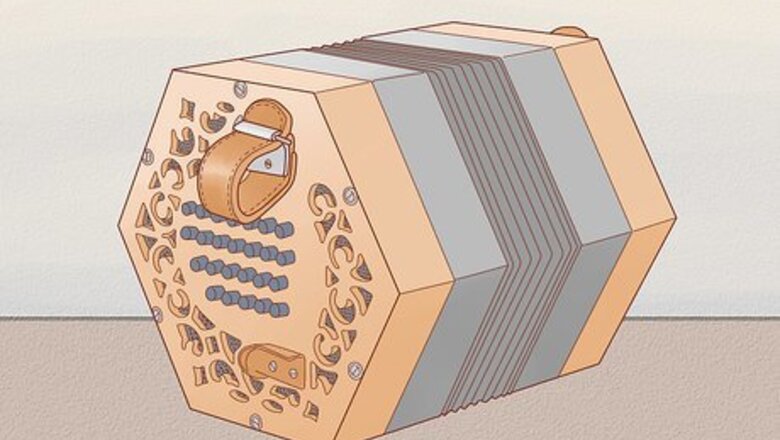
views
Picking a Concertina
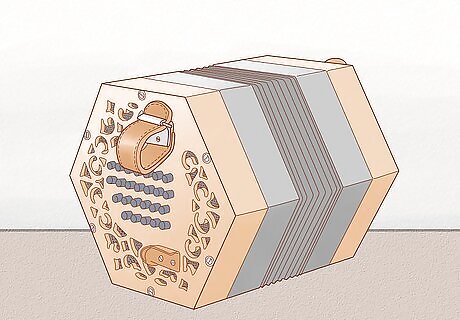
Get an English concertina to play the original instrument. When you play a scale on an English concertina, you’ll have to alternate between your left and right hands to play the notes. Look for a treble concertina to have a similar note range as a violin. Most concertinas have 48 keys, but some models will have 56 keys with extra notes at the top of the scale.
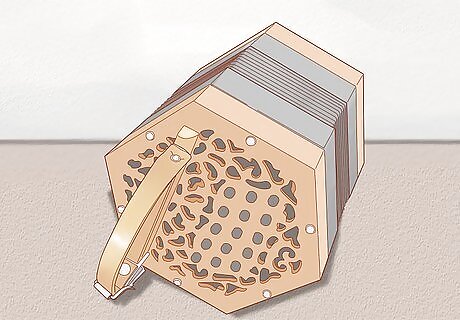
Use an Anglo concertina to have an easier time playing. An English concertina makes the same note when you open and close the bellows, but an Anglo will make different sounds. Anglo concertinas also separate the low notes on the left side and the high notes on the right, making it easier to find the notes. Anglo concertinas come in 20-key, 30-key, and 40-key variations. A 20-key concertina limits the notes you can play, but it may be a good start if you’re a beginner.
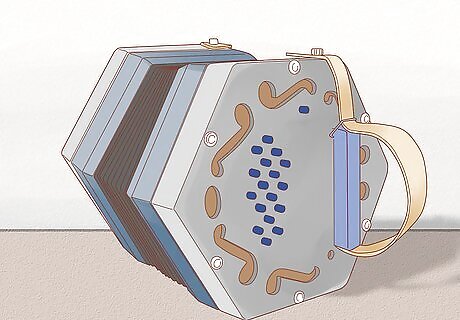
Try a duet concertina if you’re an advanced player. Duet concertinas come in many varieties with a different number of keys and layouts. The main draw for a duet concertina is being able to play melodies with 1 hand and an accompaniment on the other with ease, similar to an Anglo concertina. Some duet concertinas have up to 80 keys, giving them nearly the full range of a piano.
Holding the Instrument
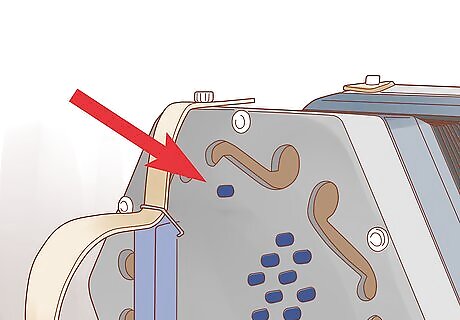
Find the air button on the top right side. Look for a key separate from the other keys. If you’re holding the concertina the correct way, the key should be on your right side. This is called the air button and it allows you to open and close the bellows without making any noise. Hold down the air button with your right thumb to activate it.
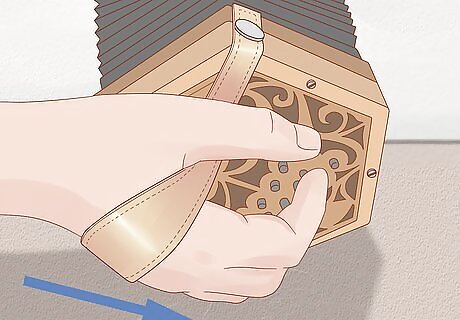
Slide your hands into the straps, keeping your thumbs outside. Look for a thumb support on top of each side of the concertina so you know which sides are the left and right. Place your hands inside so your fingers are resting on the keys on the side. Some concertinas will also have supports for your pinkies on the bottom.

Tighten or loosen the straps so your fingers can move freely. Try moving your fingers over all the keys to see if you can reach them easily. If you feel restricted, loosen the straps on each side until you can comfortably play. If your hands slip out of the concertina easily, you may need to tighten the straps more.
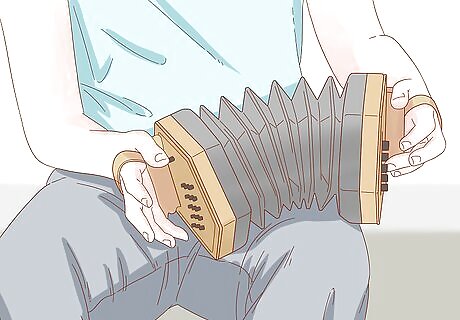
Rest one end of the concertina on your leg to support the instrument. Keep one of the sides on top of your thigh so you can use your other hand to open and close the bellows. This way, your hand is free to move without having to worry about supporting the concertina’s weight. You can hold the concertina without support if you feel comfortable doing that.
Playing Your First Notes
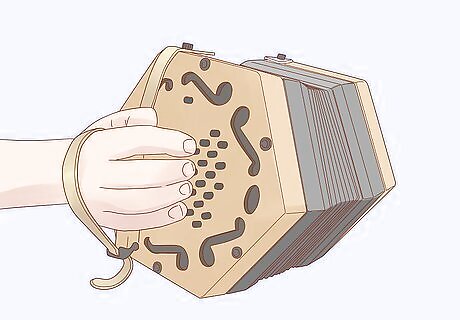
Keep your fingers on the top 4 keys in the first row. This row is referred to as the “home row” on your concertina. Keep your thumb outside of the straps and use your index finger through your pinky to control the keys on the concertina. If all your fingers cannot reach the keys, practice moving your fingers around to increase their dexterity.

Check which keys play specific notes. Each concertina will have a different layout for their keys depending on how many keys it has and the type you purchased. Refer to the owner’s manual or fingering chart to learn which keys produce the notes you want. Middle C is a good starting note, and on an English concertina, it is typically the key your second finger, or middle finger, rests on in the home row of your left hand.
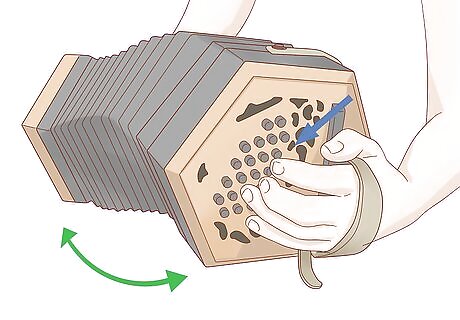
Press the key down while opening or closing the bellows to play them. Start with middle C in one of the middle rows of the concertina. Depress the key and either open or close the bellows, depending on what position they’re currently in. The note you selected will play as long as the bellows are moving. Name the note as you play it to familiarize yourself with the sound. This way, you’ll learn to play the concertina by ear. Find C1 on the opposite side of the concertina as middle C. Play C1 followed by C to hear the difference between the octaves.
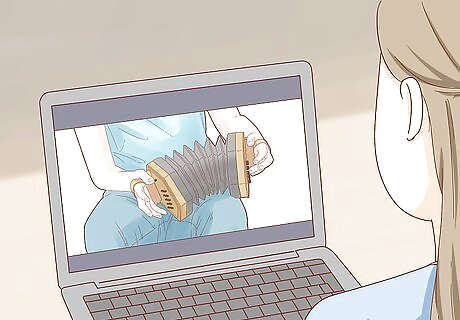
Watch video tutorials for a better understanding of notes and placement. Look up introductory concertina videos to watch how someone else plays the concertina. These lessons will go over how to properly use and hold the instrument, basic notes, and how to play simple songs. Look for various videos online from different instructors. Some lessons are usually free on sites like YouTube but will offer further lessons for a small fee on their website. Having a visual reference can be really helpful for beginners.
Practicing Scales and Melodies
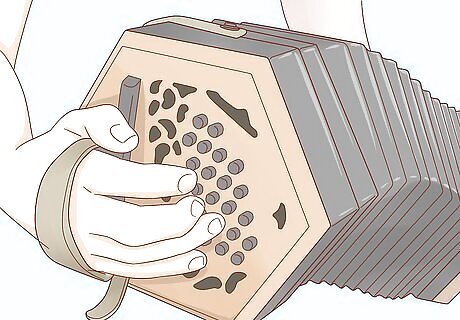
Practice your major scales. Start with middle C on your concertina and work through the 8 notes, or octave, up to C1, or high C. Depending on the type of concertina you have, you will either alternate which hands play the notes or work down the rows of keys to play your scale. Most concertinas have a 3- or 4-octave range. Work through the scales for each octave slowly to master them.
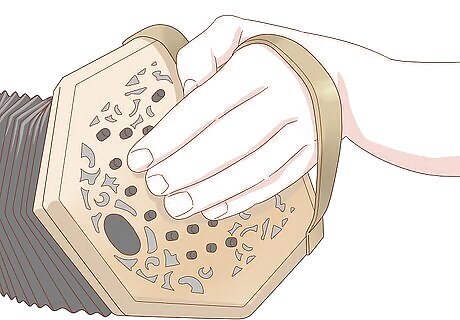
Hold down multiple buttons at the same time to play chords. Combining notes is an important part of music, especially if you are playing an accompaniment on a concertina. Start with easy major chords, like C-E-G, and then work with minor chords, like C-E flat-G.
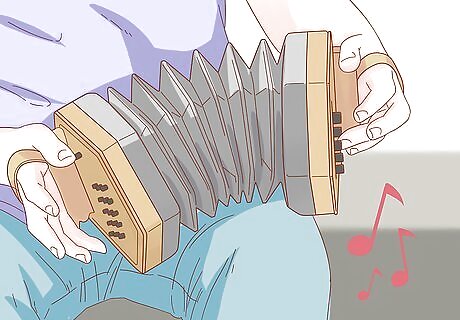
Try simple songs like “Mary Had a Little Lamb” or “Amazing Grace.” Simple songs use basic notes without any sharps or flats in the notation. Look for sheet music or watch tutorials online on how to play the songs. Practice playing the song slowly at first, and as you perfect it, start playing it faster. Tap along to the beat of the song with your foot so you don’t speed up or slow down while you play.
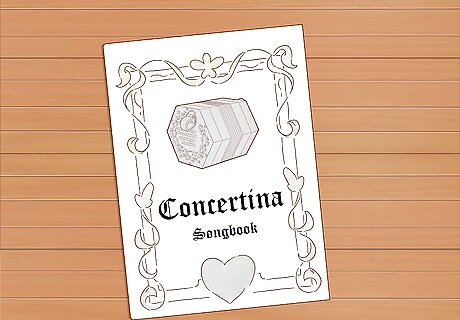
Purchase a song book for concertinas to learn more. Once you’ve mastered where the keys are and how to play simple songs, expand your knowledge with new music. Find books filled with sheet music specifically for the concertina you own so you can easily pick them up and play them. Look for chords or notes to your favorite songs from the radio and try to recreate them on your concertina.




















Comments
0 comment